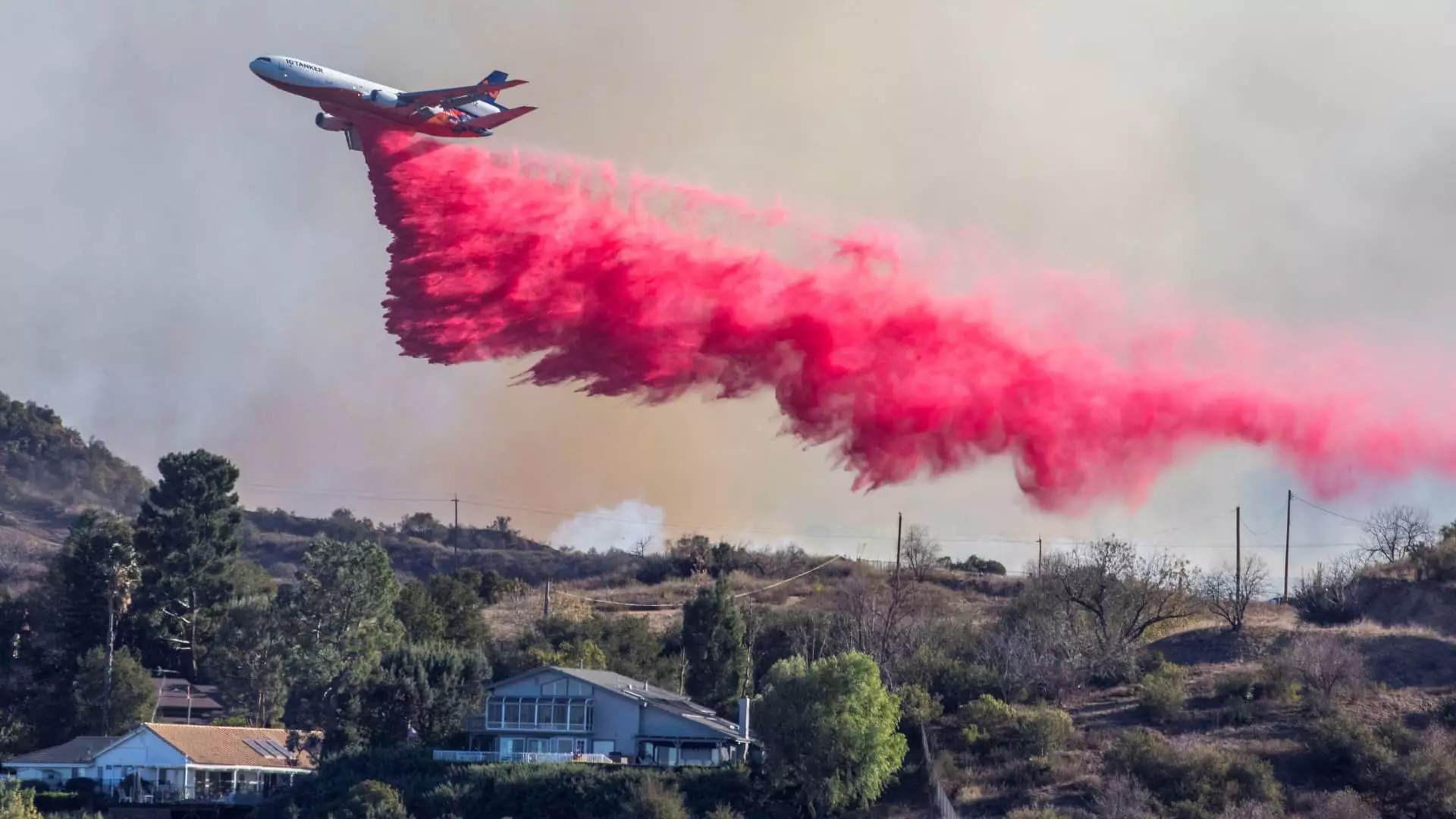As California faces increasingly severe wildfire seasons, the urgent need for aerial firefighting resources has become even more pronounced. In a recent incident, wildfires near Los Angeles caught firefighters off guard, revealing the inadequacy of the current firefighting infrastructure during what is typically the off-season. These catastrophic events serve as stark reminders of the evolving nature of climate-related emergencies, where erstwhile expectations of seasonal calm have become obsolete.
Companies dedicated to tackling these infernos from the sky, such as 10 Tanker Air Carrier from Albuquerque, New Mexico, work tirelessly to mitigate the devastation. With a fleet of modified DC-10 aircraft, specifically designed as very large airtankers (VLATs), these companies jump into action, often under challenging and unexpected conditions. This recent crisis has illustrated a critical shortfall in aerial firefighting resources and has set the stage for further examination of existing capabilities.
The demand for aerial firefighting services is not confined to peak wildfire months in the U.S.; instead, it has transcended into a year-round necessity. The 2023 wildfire season brought alarming statistics to light: wildfires have expanded in scope, with the area destroyed in the U.S. increasing over the past two decades. Climate patterns suggest that fires will only grow in frequency and ferocity, as endorsed by reports from the United Nations Environment Program.
Joel Kerley, CEO of 10 Tanker, emphasized the alarming shortage of air tankers available during periods when their services were most needed. Such shortages are exacerbated by the growing acknowledgment that comprehensive strategies for fire containment must now factor in year-round readiness. The 10-year contract worth $7.2 billion that the U.S. Forest Service extended to 10 Tanker and its fellow providers reflects not only the monetary commitment needed but also underscores the seriousness of the situation.
The repercussions of wildfires can be catastrophic, as observed in the case of the Palisades and Eaton fires that engulfed over 37,000 acres and rendered more than 16,000 structures lost. Such events often demand urgent, specialized responses that can only be provided by trained pilots operating advanced aircraft. Unfortunately, as Kerley noted, limitations in available equipment were felt acutely during periods of high demand.
The challenges are twofold: the need for both seasoned pilots and well-maintained aircraft. With a pool of approximately 30 staff pilots, 10 Tanker’s response teams face the daunting task of navigating increasingly severe weather and terrain. With seven to eight mechanics assigned to each aircraft, the strain on resources is palpable, especially when equipment is subjected to the rigors of arduous firefighting missions.
Transforming conventional aircraft into firefighting tools is no small feat; it can take over a year to modify jets for this purpose. The complexities involved in such conversions highlight the logistical challenges facing private firefighting entities. Kevin McCullough, president of Aero Air, emphasized that successful modifications necessitate more than just basic alterations; they require comprehensive redesigns suited for firefighting.
The aircraft themselves also face scrutiny: with many of them dating back decades, maintenance and operational viability become pressing issues. Amidst increasing pressures to modernize fleets, manufacturers like De Havilland are stepping up by developing next-generation water scoopers, which promise advancements in areas like temperature regulation and anti-corrosion features. However, while these innovations are promising, they take time to implement, and the urgency for immediate resources remains critical.
Looking forward, the aging fleet of firefighting aircraft combined with the expanding scope of wildfires presents an unresolved conundrum for firefighting agencies. The growing consensus among experts indicates that in light of climate change and its impacts, the urgency and frequency of fires will only intensify, requiring a robust supply of aerial resources.
The future will likely hinge on increased investment in firefighting technologies and infrastructure to ensure teams are equipped adequately to confront wildfires head-on. It also calls for proactive planning, including the allocation of government contracts and fostering partnerships between the public and private sectors to develop a more responsive firefighting ecosystem.
As California and other regions continue to grapple with the ferocity of climate-induced wildfires, the aerial firefighting community must adapt to this new reality. By harnessing innovations, boosting resource availability, and emphasizing timely responses, we can work toward a safer, better-prepared future amid the consequences of environmental change.

